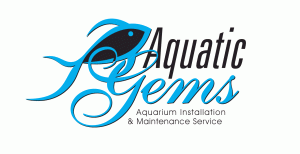The Leopoldi Stingray is a species of fish in the Potamotrygonidae family endemic to Brazil. Its natural habitat is rivers. Like other members of the genus it inhabits a variety of biotopes. These include sand banks, the shallows of major rivers and slow-moving tributaries with substrates of mud or sand. It also moves into areas of flooded forest during the annual wet season and can later be found in terrestrial lakes and ponds formed by the receding flood waters.
Stingrays are so-called for their serrated, dagger-like stinger located on the top of and lying flat towards the end of the tail. Usually sheathed in a layer of skin and not always easy to see, this effective defence weapon is made of a protein, and is accompanied by a nasty venom usually released when the skin sheath of the stinger is ruptured. If the stinger cuts you it can cause large local blisters and intense burning throbbing pain.
Symptoms experienced when stung
- The person feels immediate, sharp, excruciating pain that peaks in 1-2 hours
- The wound bleeds
- The wounded area may become swollen and may turn blue or red
- Lymph nodes may become swollen
- Nausea
- Vomiting
- Fever
- Chills
- Muscle cramps
- Tremors
- Paralysis
- Fainting
- Seizures
- Elevated heart rate and decreased blood pressure may develop
Treatment
- Flushing the wound with fresh water
- Scrubbing the affected area with soap and fresh water, and removing all stingers with tweezers.
- Soaking the affected area in hot water (as hot as can be tolerated without causing burns) can help relieve the pain.
- Since there is a strong likelihood of infection developing in the wound area, antibiotics may be prescribed along with medications for pain control.
However, these big, scary, dangerous stingrays are actually quite stunning and safe to keep in an aquarium. Leopoldi rays are a fresh water species, which in turn makes maintenance a lot easier and water chemistry a lot simpler. Leopoldi rays can reach a maximum size of 24 inches / 60 cm and prefer a pH range of between 6.0 – 6.8.
In the wild these rays would feed primarily on other fish and invertebrates, including worms and crustaceans. They’re active fish with a high metabolic rate and as such will need feeding at least twice a day. They’re also notoriously big eaters and it can cost a fair amount of money to keep even a single ray in good health, but it’s well worth it. In general, an exclusively meaty diet is preferable, such as muscles, prawns, fish etc. Some will also learn to accept dried foods.
Unlike other animals we find in the aquatic shop, gender identification is pretty simple with these guys. Just like their relatives, the Sharks and Marine Rays, male Leopoldi rays have a pair of sexual appendages known as “claspers”, one on each pelvic fin. These are used to inseminate the female when mating and are clearly visible, appearing as finger-like extensions extending backwards from the inside of the fin. In young males they’re much smaller, but can still be seen if you look closely.
Rays can be quite picky when it comes to choosing a mating partner. Simply buying a pair of rays and putting them together will not guarantee a successful breeding pair. The ideal way to obtain a pair is to buy a group of juveniles, housing them in a huge tank and allowing them to select their own partners. The spawning act itself is quite brief, lasting only a few seconds. Fertilisation occurs internally, the male inserting one of his claspers into the cloaca of the female before releasing his milt. Following a successful mating event the male should stop harassing his partner. In captive environments, rays generally gestate for between 9-12 weeks. During the latter stages the developing young can sometimes be seen as a visible lump rising from the posterior end of the female’s back, although in well-fed specimens this can be tricky to spot. It’s essential to feed the female in sufficient quantities during this period as she will expend a lot of energy providing for her pups, and her appetite will increase significantly. The pups usually have a small yolk sac attached at birth, and they will feed from this for anything up to a week. After the sac has been absorbed they should be offered high quality live and frozen foods several times a day.
Like other freshwater stingrays, Leopoldi rays have keen eyesight. Their protruding eyes allow them to see what is above them while they are on the river bottom and also help them to navigate through their murky environment. They also possess ampullae of Lorenzini (special sensing organs called electroreceptors, forming a network of jelly-filled pores) located on their skin around the nose and mouth that allows them to detect minute electric fields generated by other living organisms. This sensory detection warns them of potential predators and prey.
Overall, these animals are amazingly intelligent and a pleasure to keep. Our customers who are privileged enough to keep them think of them as one of their family and, with our help, take the greatest of care of these amazing animals.
We are lucky enough to be involved in a Leopoldi stingray breeding project and have a breeding pair of rays. Take a look at our YouTube video to see the breeding ritual of the male and female rays as he tries to bite the female ray to encourage her into submission – quite normal for sharks and rays, but I wouldn’t try it at home 🙂
Authored by Jack Riley, Aquatic Technician at Aquatic Gems Ltd



